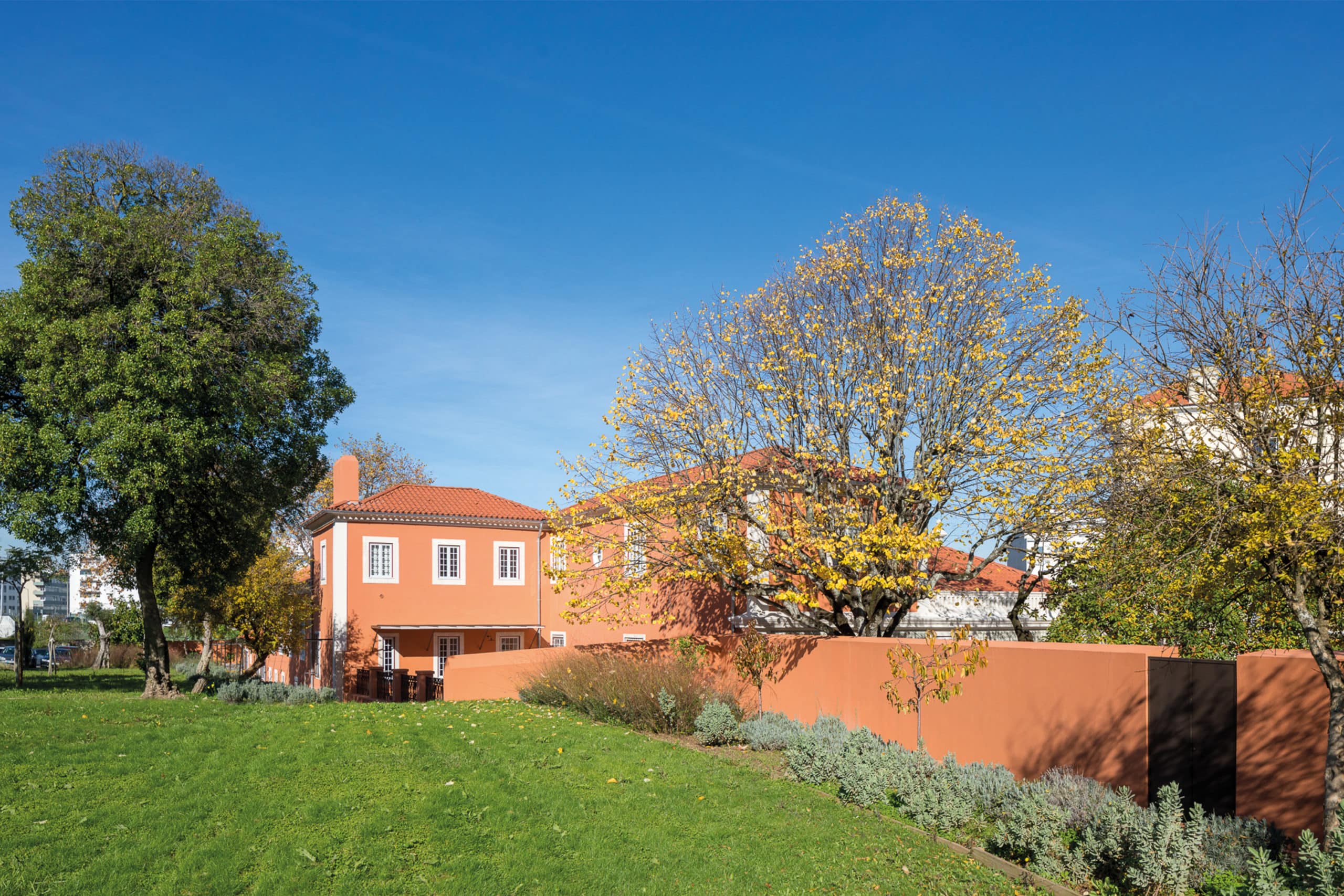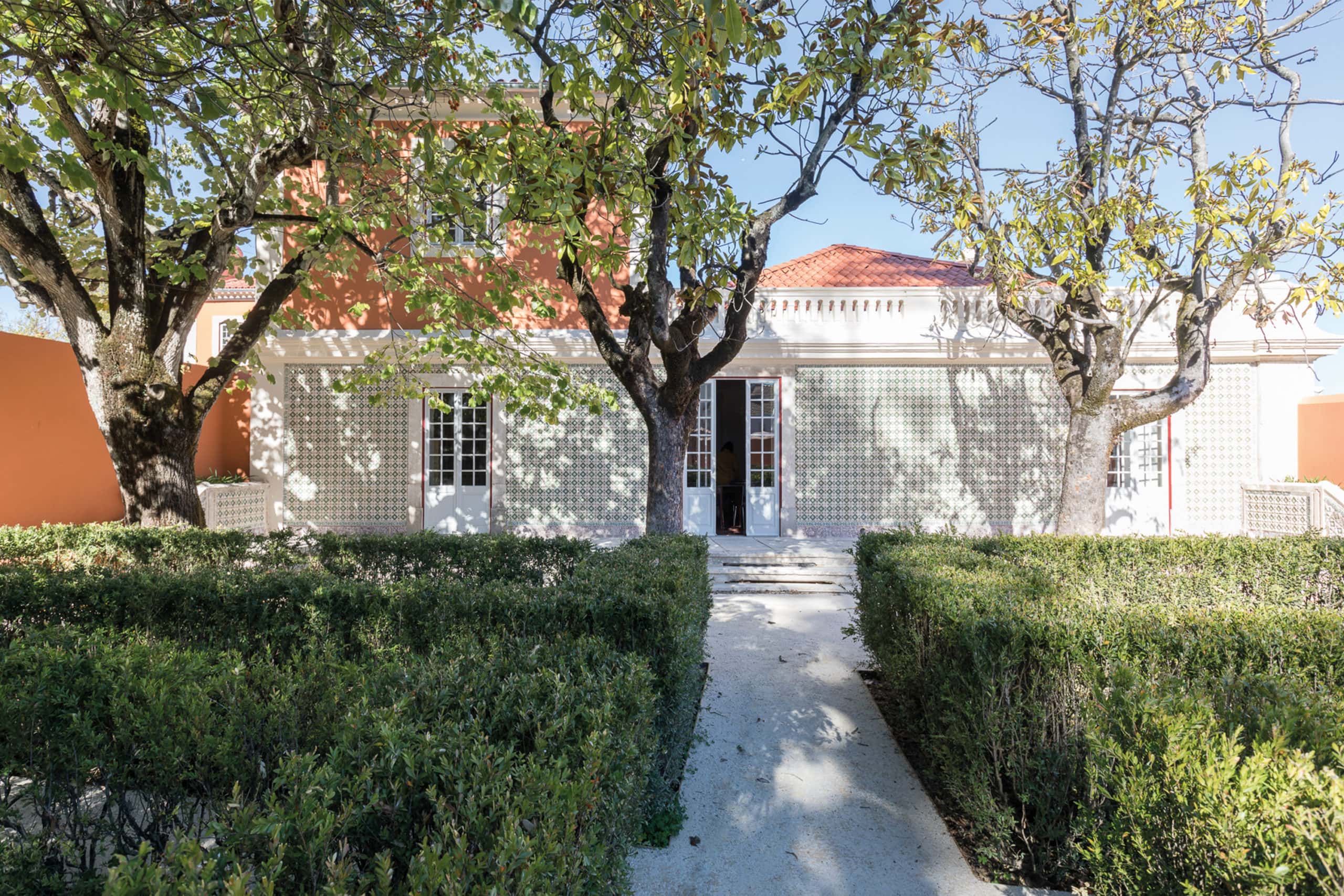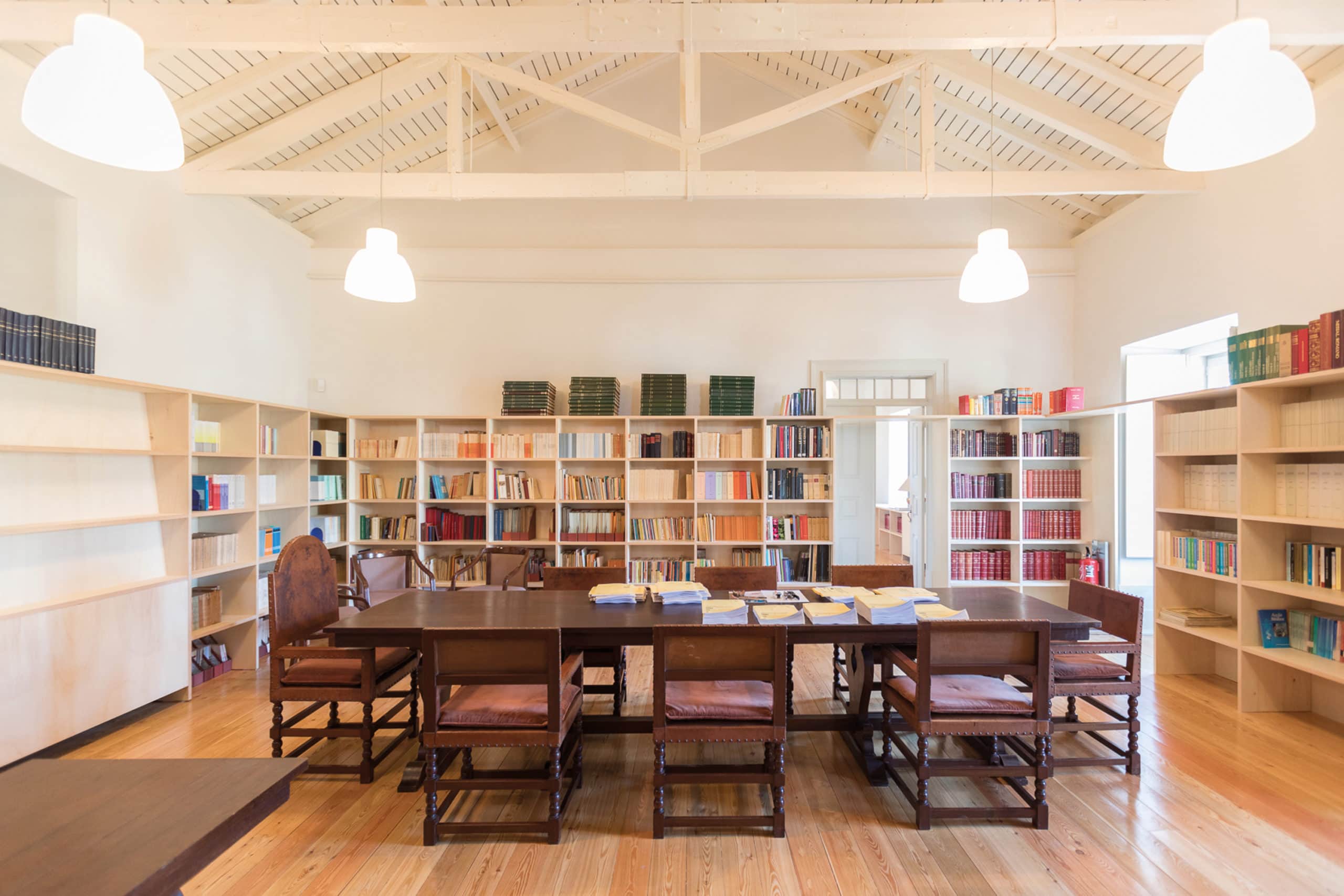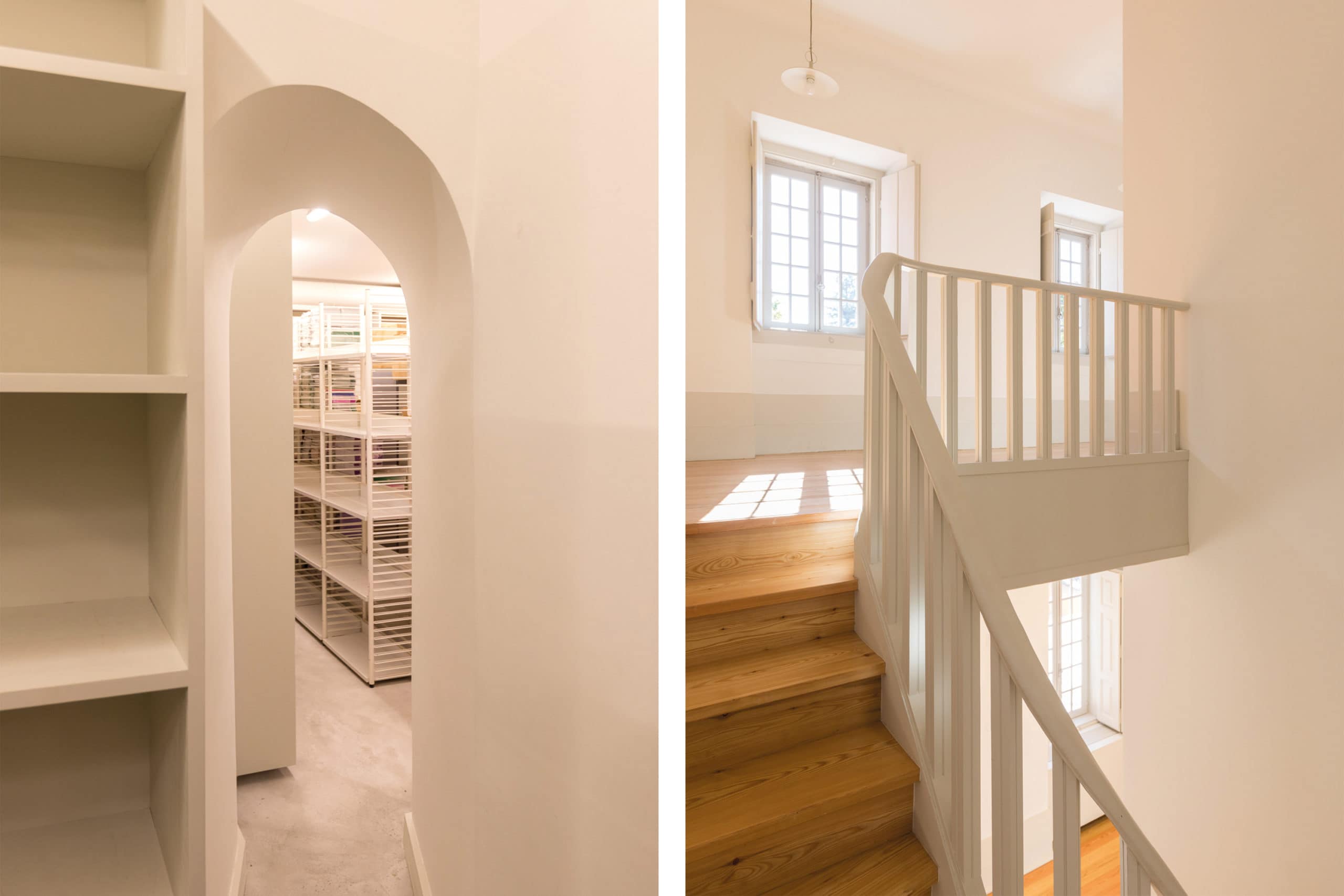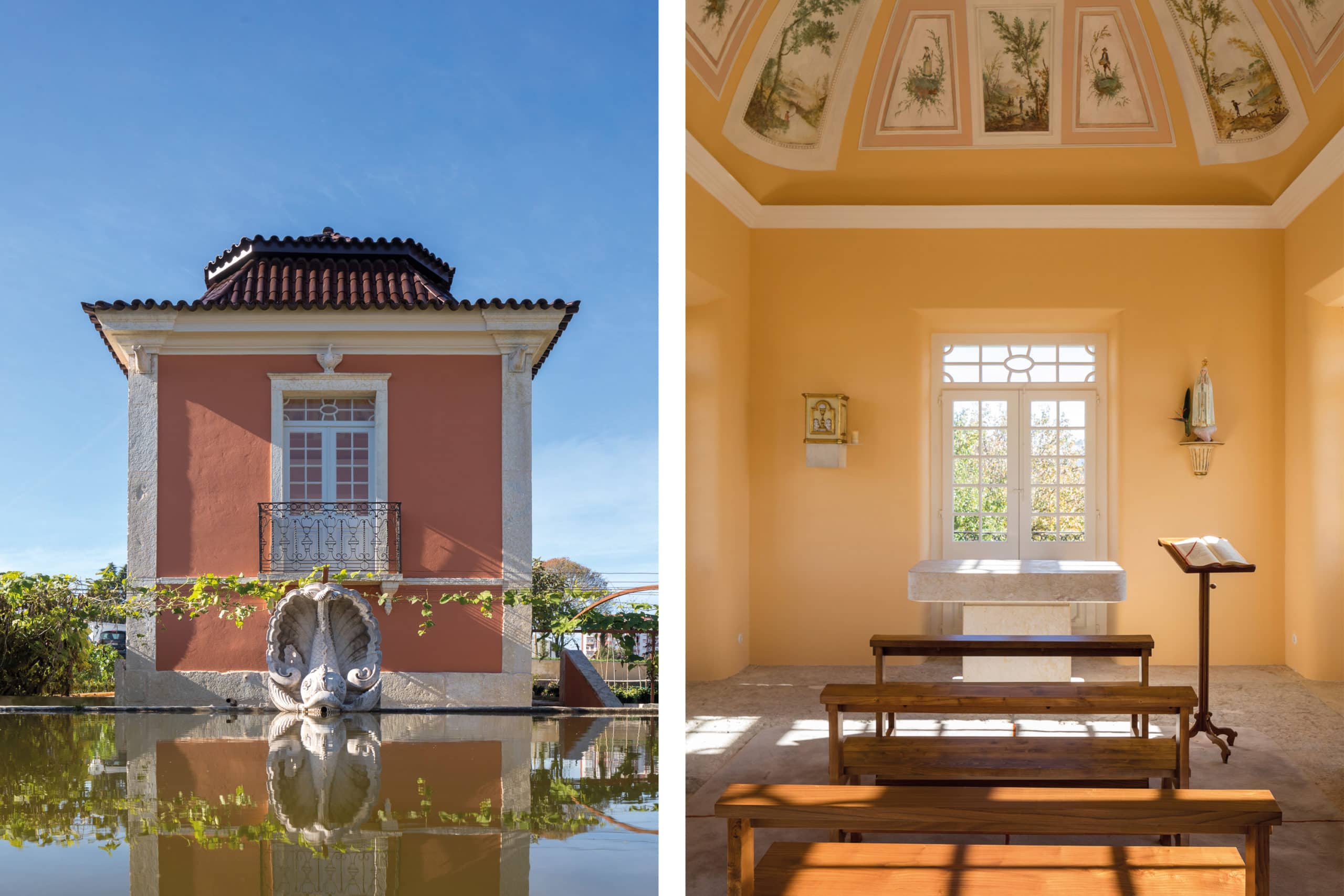The intervention in an ensemble such as Quinta do Bom Pastor, the result of different periods and uses, requires a detailed assessment of values, taking into account the specific nature of each pre-existing building, the potential of its interconnection and the inevitable enjoyment of the surrounding landscape quality.
The programme for the headquarters of the Portuguese Bishops’ Conference is an extensive, diversified and complex programme of services. This programme and the type of use required a great deal of infrastructure, which had to be introduced while preserving the integrity of the pre-existence. All solutions were dimensioned space by space, case by case, taking into account the function, number of users, solar orientation, openings, thermal inertia, thermal load… – an adaptive comfort or adaptive rehabilitation principle that we always keep in mind as a way to minimize the intrusiveness of the solutions.
As it is an ensemble that has been subject to interventions over several centuries, it was important first of all to identify the values to be preserved – original building elements such as stone masonry and stone balustrades and iron railings, but also a succession of decorative interventions – such as the decorative tile panels (interior and exterior), the façade of relief tiles facing the boxwood garden, the “embrechados” and the frescoes on the ceiling of the pavilion/fresco house. In order to maintain the integrity of the decorative elements, an attempt was made to reintegrate them using, as far as possible, materials identical to the existing ones.
The intervention in the exterior spaces followed the same methodology as the building – diagnosing values and observing the premises of the Detailed Urban Plan of Calhariz, walls and paths were rehabilitated, maintaining signs of its rural matrix. In new plantations, agricultural species and ground cover with herbaceous species were given precedence over grass, and existing cultivated areas were maintained.
